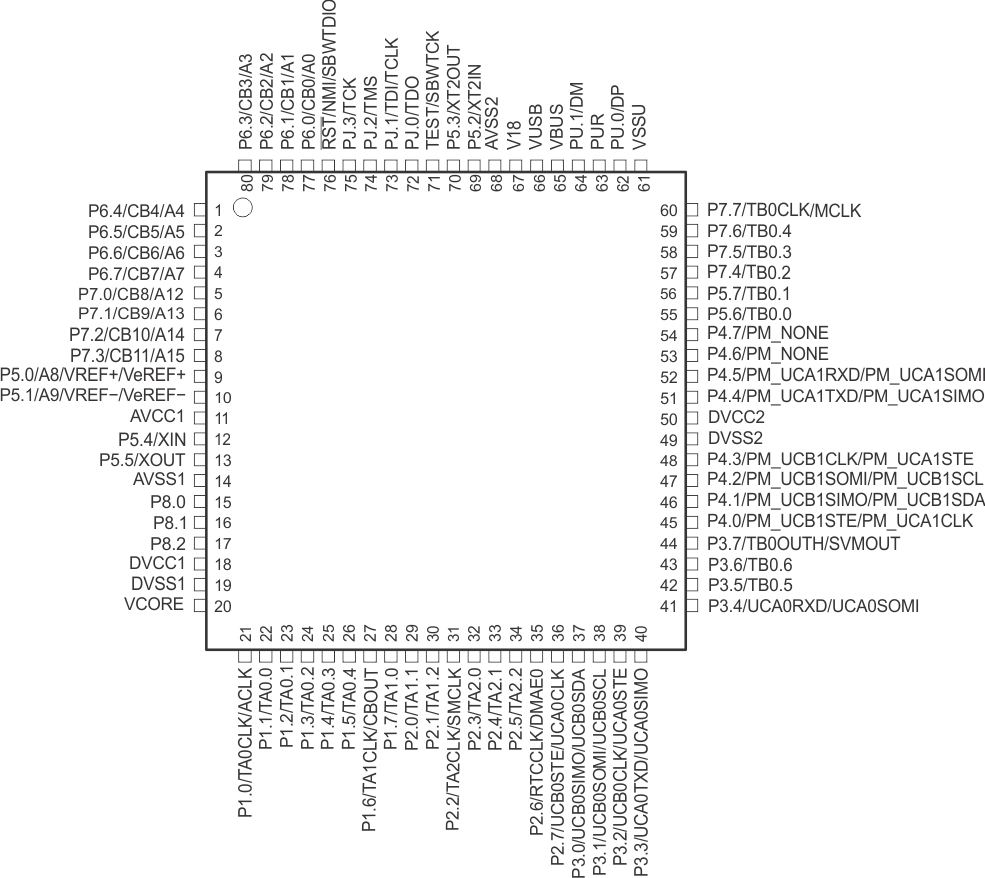SLAU533D September 2013 – April 2017
-
MSP430F5529 LaunchPad™ Development Kit (MSP‑EXP430F5529LP)
- Trademarks
- 1 Getting Started
- 2
Hardware
- 2.1 Block Diagram
- 2.2
Hardware Features
- 2.2.1 MSP430F5529
- 2.2.2 eZ-FET lite Onboard Emulator
- 2.2.3 Integrated Full-Speed USB Hub
- 2.2.4 Power
- 2.2.5 Clocking
- 2.2.6 Application (or "Backchannel") UART
- 2.2.7 Emulator and Target Isolation Jumper Block
- 2.2.8 Isolation Jumper Block: 3.3-V and 5-V Jumpers
- 2.2.9 Isolation Jumper Block: Emulator Connection and Application UART
- 2.3 Measure Current Draw of MSP430 MCU
- 2.4 Using an External Power Source
- 2.5 Using the eZ-FET lite Emulator With a Different Target
- 2.6 USB BSL Button
- 2.7 BoosterPack Plug-in Module Pinout
- 2.8 Design Files
- 2.9 Hardware Change Log
- 3
Software Examples
- 3.1 MSP430 Software Libraries: driverlib and the USB API
- 3.2 Viewing the Code
- 3.3 Example Project Software Organization
- 3.4 USB Configuration Files
- 3.5 Out-of-Box Experience: emulStorageKeyboard
- 3.6 Example: simpleUsbBackchannel
- 3.7 Starting Device Manager
- 4 Additional Resources
- 5 FAQs
- 6 Schematics
- Revision History
2.2.1 MSP430F5529
The MSP430F552x is one of several USB-equipped MSP430 MCU families. It offers:
- 1.8-V to 3.6-V operation
- Up to 25-MHz system clock
- 128KB flash memory, 8KB RAM (in addition to 2KB shared RAM with the USB module)
- Ultra-low-power operation
- Full-speed USB with 14 endpoints – enough for almost any USB application
- Five timers, up to four serial interfaces (SPI, UART, or I2C), 12-bit analog-to-digital converter, analog comparator, hardware multiplier, DMA, and more
Figure 9 shows the pinout of the MSP430F5529 in the PN package (LQFP).
 Figure 9. MSP430F5529 Pinout
Figure 9. MSP430F5529 Pinout Other USB-equipped MSP430 MCU families include the smaller F550x family and the larger F563x, F663x, F565x, and F665x families.
To compare the various MSP430 MCUs, download the MSP430 Product Brochure, which is also available from http://www.ti.com/msp430. The brochure has a table that lets you see at a glance how the families compare and their pricing. This document is frequently updated as new MSP430 MCUs become available.